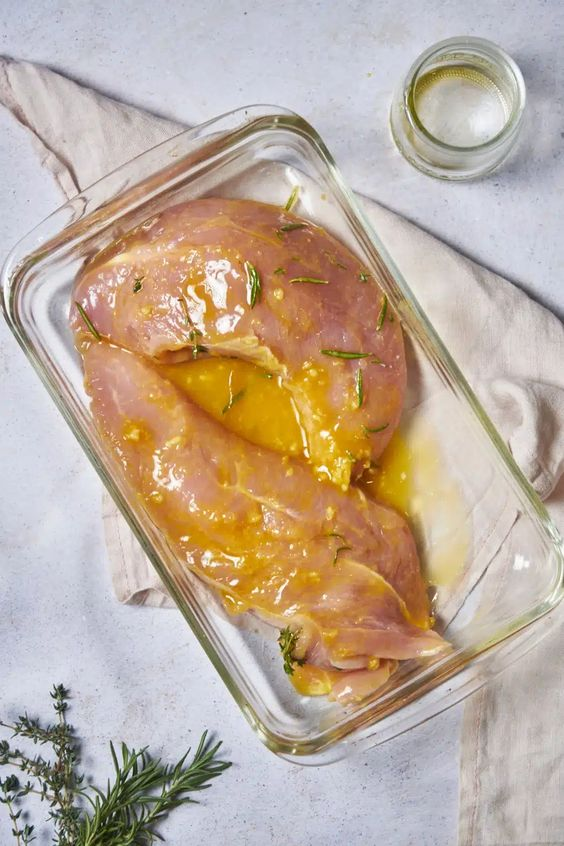Mastering Turkey Tenderloin: A Step-by-Step Culinary Guide
Turkey tenderloin, with its lean and tender meat, is a versatile and healthy protein that can be the star of your next meal. Whether you’re looking for a quick weeknight dinner or planning a special occasion feast, knowing how to cook turkey tenderloin to perfection is a valuable culinary skill. In this article, we’ll explore the steps to prepare and cook turkey tenderloin, ensuring that it remains juicy, flavorful, and the highlight of your dining experience.
Selecting the Right Turkey Tenderloin
Before we dive into the cooking process, it’s crucial to choose high-quality turkey tenderloin. Here’s what to consider:
- Freshness: Look for turkey tenderloin that is pinkish in color and has a clean, meaty aroma. Avoid any with off-putting odors or discoloration.
- Size: Turkey tenderloins can vary in size, so choose one that suits your needs and the number of servings you require. They are typically sold in vacuum-sealed packages in the meat section of your local grocery store.

Ingredients You’ll Need:
To cook turkey tenderloin to perfection, you’ll need the following ingredients:
- Turkey tenderloin
- Olive oil or your preferred cooking oil
- Salt and freshly ground black pepper
- Fresh herbs and seasonings (optional)
- A roasting pan or oven-safe skillet
Step 1: Preparing the Turkey Tenderloin
- Start by removing the turkey tenderloin from its packaging and patting it dry with paper towels. Moisture on the surface of the meat can inhibit browning.
Step 2: Seasoning the Turkey Tenderloin
- Drizzle a bit of olive oil over the turkey tenderloin, ensuring it is lightly coated.
- Season the meat generously with salt and freshly ground black pepper.
- Optionally, you can add extra flavor by rubbing minced garlic, fresh herbs like rosemary or thyme, or your favorite seasonings onto the tenderloin.
Step 3: Preheat the Oven
- Preheat your oven to 375°F (190°C). Ensure that the oven is fully preheated before you start cooking.
Step 4: Searing the Turkey Tenderloin (Optional)
Searing the turkey tenderloin before roasting can enhance its flavor and texture. Here’s how:
- Heat an oven-safe skillet over medium-high heat.
- Add a touch of olive oil to the hot skillet.
- Carefully place the turkey tenderloin in the skillet and sear it for about 2-3 minutes per side, until it develops a golden-brown crust.
Step 5: Roasting the Turkey Tenderloin
- Transfer the seared or unseared turkey tenderloin to a roasting pan or an oven-safe skillet.
- Place the pan in the preheated oven.
- Roast the turkey tenderloin for approximately 25-30 minutes, or until it reaches an internal temperature of 165°F (74°C). Use a meat thermometer to ensure accurate cooking.

Step 6: Resting and Serving
- Once the turkey tenderloin reaches the desired temperature, remove it from the oven and let it rest for about 5-10 minutes. This allows the juices to redistribute within the meat, resulting in a juicier, more flavorful turkey.
- After resting, slice the turkey tenderloin into even portions and serve it hot.
Conclusion: Savoring Turkey Tenderloin Perfection
Cooking turkey tenderloin to perfection is a culinary skill that can elevate your meals. The tender, lean meat is a canvas for a variety of flavors, and with the right technique, you can create a memorable dining experience. Whether you’re serving it with a simple pan sauce, slicing it for sandwiches, or featuring it in a gourmet meal, turkey tenderloin is a versatile protein that can shine in a variety of culinary creations. So, the next time you have turkey tenderloin in your kitchen, remember these steps and savor the delicious results.


